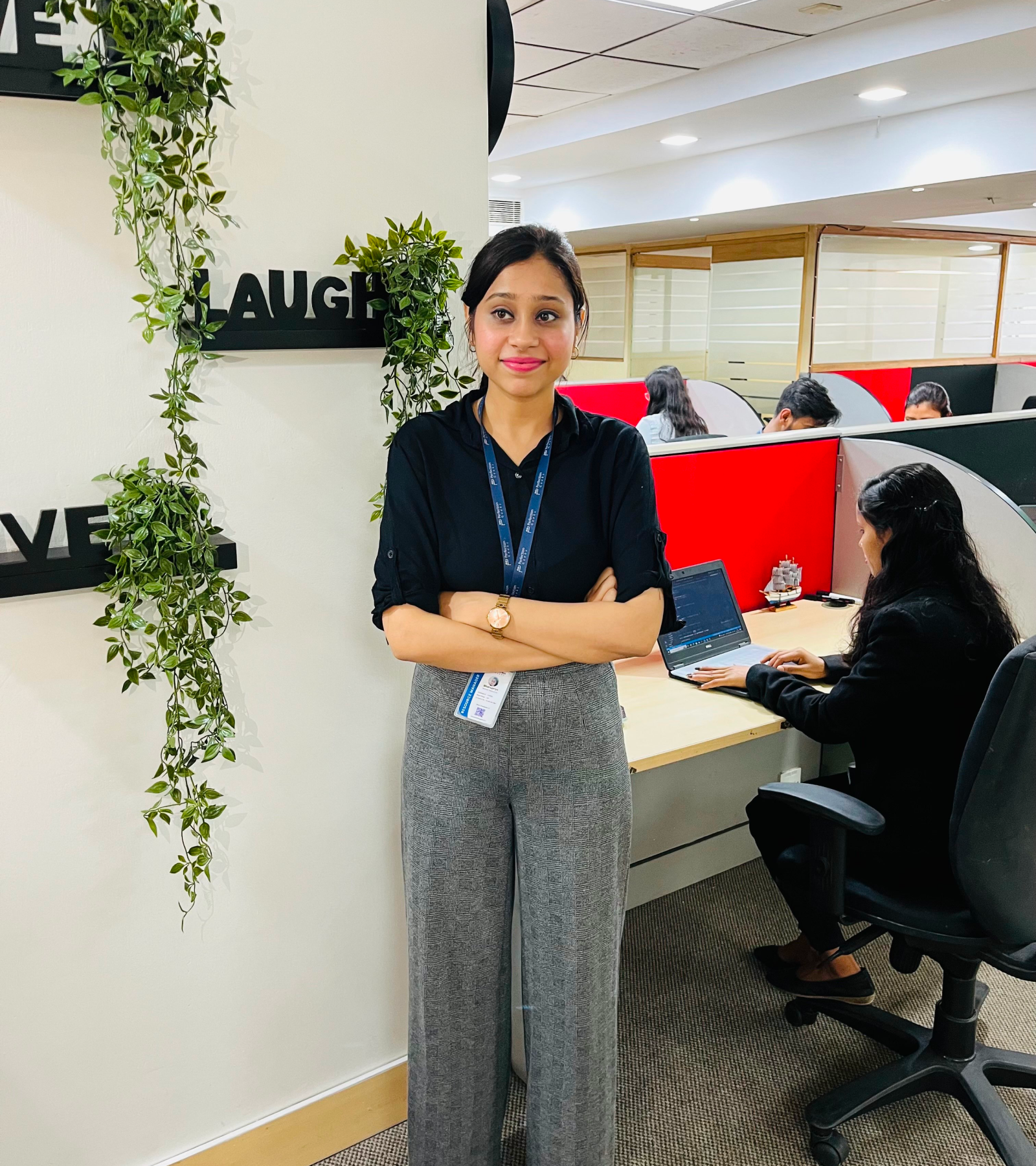How to Develop an App like OpenTable

MAY, 20, 2024 14:05 PM
How to Develop an App like OpenTable
In today's fast-paced world, dining out has become more than just a meal it's an experience. OpenTable revolutionised the restaurant industry by providing a platform that allows users to discover restaurants, read reviews, and make reservations seamlessly. If you're inspired by OpenTable's success and want to develop a similar app, you're in the right place. In this guide, we'll walk you through the essential steps and considerations to bring your vision to life.
Understanding the Concept:
Developing an app like OpenTable demands a thorough comprehension of its core features, which have been pivotal to its success. Let's delve deeper into each aspect to gain a comprehensive understanding:
Restaurant Discovery:
- Comprehensive Listings: Curating an extensive database of restaurants is paramount. It involves sourcing information about various eateries, including their locations, cuisines, menus, opening hours, contact details, and special features.
- Advanced Search Functionality: Implementing robust search capabilities enables users to find restaurants tailored to their preferences. This includes filters for cuisine types, price ranges, dietary restrictions, ambiance preferences, and proximity to specific landmarks or neighbourhoods.
- Personalisation: Employ algorithms that leverage user data to provide personalised recommendations. Factors like past dining history, favourite cuisines, and user ratings can inform restaurant suggestions, enhancing the overall user experience.
- Quality Assurance: Ensuring the accuracy and reliability of restaurant listings is vital. Regularly updating information, verifying restaurant credentials, and moderating user-generated content contribute to maintaining a trustworthy platform.
Reservation Management:
- Real-Time Booking System: Building a responsive reservation system allows users to make bookings instantly. Seamless integration with restaurant availability calendars ensures up-to-date information on table availability.
- User-Friendly Interface: Design an intuitive booking interface that guides users through the reservation process effortlessly. Features such as calendar views, time slot selection, and interactive seating maps enhance usability.
- Confirmation and Reminders: Automate confirmation notifications to reassure users that their reservations are confirmed. Additionally, sending timely reminders via push notifications or emails helps reduce no-shows and enhance user engagement.
- Flexibility and Customisation: cater to diverse user preferences by offering flexible booking options. This includes allowing users to specify special requests, dietary preferences, and celebration occasions when making reservations.
- Waitlist Management: Implement a waitlist feature for fully booked restaurants, enabling users to join a queue and receive notifications when tables become available. This feature enhances user satisfaction and maximises restaurant occupancy.
User Profiles:

- Personalisation and Customisation: Provide users with the ability to create personalised profiles where they can manage their dining preferences, dietary restrictions, and communication settings. Customisable profiles enhance user engagement and loyalty.
- Favourites and History: Enable users to bookmark favourite restaurants and view their dining history within the app. This feature facilitates easy access to preferred dining options and fosters repeat usage.
- Social Integration: Integrate social features that allow users to connect with friends, share dining experiences, and discover new restaurants through social recommendations. Social interactions enrich the user experience and drive user acquisition through word-of-mouth referrals.
- Reward Programmes: Implement loyalty programmes or rewards systems to incentivize user engagement and foster brand loyalty. Rewarding users for frequent bookings, referrals, and participation in app activities encourages repeat usage and advocacy.
Reviews and Ratings:
- Authentic User Feedback: Encourage users to leave genuine reviews and ratings after dining experiences. Establishing trust and credibility within the user community is essential for the success of the review system.
- Detailed Review Forms: Provide users with structured review forms that cover various aspects of their dining experience, including food quality, service, ambiance, value for money, and overall satisfaction. Structured feedback facilitates meaningful insights for both users and restaurant owners.
- Rating Aggregation: Aggregate ratings and reviews to generate overall scores for each restaurant. Implement algorithms that weigh recent reviews more heavily to ensure relevance and accuracy.
- Moderation and Quality Control: Implement robust moderation mechanisms to weed out fake or spammy reviews. Manual moderation, user reporting systems, and automated content analysis tools can help maintain the integrity of the review system.
- Response Mechanism: Allow restaurant owners to respond to user reviews and address feedback publicly. Establishing open communication channels between users and restaurant staff fosters transparency and accountability.
Integration with Restaurants:
- Seamless Data Synchronisation: Establish secure APIs or integration protocols to synchronise reservation data between the app and restaurant management systems. Real-time updates ensure accurate availability information and minimise booking conflicts.
- Restaurant Partner Portal: Provide restaurants with a dedicated portal or dashboard where they can manage reservations, update availability, and access analytics. Empowering restaurant owners with tools to streamline operations enhances their satisfaction and loyalty.
- Value-Added Services: Offer additional services to restaurant partners, such as analytics dashboards, customer relationship management tools, and promotional features. Providing tangible benefits beyond basic reservation management strengthens partnerships and drives mutual growth.
- Onboarding and Support: Facilitate smooth onboarding for new restaurant partners through comprehensive training and support resources. Ongoing technical assistance and customer support channels ensure that restaurant partners feel supported and valued.
By thoroughly understanding and implementing these core features, your app can emulate the success of OpenTable while also addressing the evolving needs and expectations of users and restaurant partners in the competitive dining landscape.
Cost Considerations:
Developing an app like OpenTable entails various cost considerations, ranging from hiring a proficient development team to ongoing maintenance and support. Let's delve into each aspect in detail:
Development Team:
- Expertise and Location: The cost of hiring a mobile app development company depends significantly on the expertise and location of the developers. Development teams in regions with lower labour costs, such as Eastern Europe, India, or Southeast Asia, may offer competitive rates. However, ensure that the team has a proven track record in developing similar applications and possesses the necessary expertise in technologies like iOS, Android, backend development, and database management.
- Skill Sets: The complexity of your app's features will determine the skill sets required by your development team. For instance, if your app requires real-time synchronisation, you'll need developers proficient in implementing robust backend systems and APIs. Similarly, if you plan to incorporate machine learning algorithms for recommendation systems, you'll need developers with expertise in data science and AI.
- Team Size: The size of your development team also affects costs. A larger team may expedite the development process but could increase expenses. Strike a balance between efficiency and cost-effectiveness based on your project's scope and timeline.
Features and Complexity:
- Feature Set: The more features you incorporate into your app, the higher the development costs. Consider prioritising features based on their importance and feasibility. Essential features such as restaurant discovery, reservation management, and user profiles should take precedence, while additional features can be phased in through future updates.
- Complexity: Complex features like real-time synchronisation, advanced recommendation algorithms, geolocation services, and social integrations require more development time and resources. Factor in the complexity of each feature when estimating development costs and allocate resources accordingly.
- Scalability: Design your app with scalability in mind to accommodate future growth and feature enhancements. Invest in a flexible architecture that can adapt to changing user demands and technological advancements without significant redevelopment costs.
UI/UX Design:
- User Experience (UX): Investing in quality UI/UX design services is crucial for creating an intuitive and engaging user experience. Work with experienced designers who understand the principles of usability, information architecture, and user interaction design. Conduct user research and usability testing to refine your app's design and ensure it meets the needs and preferences of your target audience.
- Wireframing and Prototyping: Begin the design process with wireframing and prototyping to visualise the app's structure and flow. Iteratively refine these designs based on feedback from stakeholders and usability testing sessions. A well-defined design process reduces development iterations and minimises costs in the long run.
- Responsive Design: With the proliferation of mobile devices with varying screen sizes and resolutions, prioritise responsive design to ensure your app looks and functions seamlessly across different platforms and devices. A responsive design approach reduces development efforts by eliminating the need for separate designs for each platform.
Platforms:
- iOS, Android, or Both: Decide whether you want to develop your app foriOS,Android, or both platforms. Developing for multiple platforms increases development costs due to the need for platform-specific development and testing. Consider factors such as target audience demographics, market share, and platform preferences when making this decision.
- Cross-Platform Development: Alternatively, you may opt for cross-platform development frameworks like React Native or Flutter to build a single codebase that runs on multiple platforms. While this approach can reduce development costs and time-to-market, it may involve trade-offs in performance and platform-specific features.
Maintenance and Support:
- Post-Launch Support: Launching your app is just the beginning. Ongoing maintenance and support are necessary to address bugs, release updates, and enhance features based on user feedback. Budget for post-launch support services, including bug fixes, performance optimisation, security updates, and compatibility with new OS versions and devices.
- Feature Enhancements: Allocate resources for continuous feature enhancements to keep your app competitive and relevant in the market. Regularly gather user feedback, analyse usage patterns, and prioritise feature requests based on their impact and feasibility.
- Technical Support: Provide timely technical support to address user inquiries, troubleshoot issues, and resolve customer complaints. A responsive support system enhances user satisfaction and fosters long-term user loyalty.
Steps to develop the app:
Market Research:
- Competitive Analysis: Conduct a thorough analysis of existing restaurant reservation apps, including OpenTable, to understand their strengths, weaknesses, and market positioning. Identify key competitors, their target demographics, pricing models, and unique selling propositions.
- User Surveys and Interviews: Engage with potential users through surveys, focus groups, and interviews to gather insights into their preferences, pain points, and unmet needs regarding dining reservations. Understanding user behaviours, expectations, and pain points is crucial for shaping your app's features and user experience.
- Market Trends and Opportunities: Stay abreast of emerging trends and innovations in the restaurant industry, such as the rise of contactless dining, personalised dining experiences, and sustainability initiatives. Identify market gaps and opportunities for differentiation that your app can capitalise on.
Define Features:
- Feature Prioritisation: Based on your market research findings, create a comprehensive list of features that align with user needs and market demands. Prioritise these features based on their importance, feasibility, and potential impact on user satisfaction and engagement.
- Minimum Viable Product (MVP): Define the core features essential for launching your app and validating its value proposition. Focus on building a functional MVP that addresses the most critical user needs while keeping development costs and timelines manageable.
- Feature Roadmap: Develop a roadmap outlining the evolution of your app's features over time. Identify future enhancements and innovative features that can differentiate your app and drive long-term growth and user retention.
UI/UX Design:
- User Persona Development: Create detailed user personas representing your target audience segments, including their demographics, preferences, goals, and pain points. Use these personas to inform design decisions and ensure that the app caters to the needs of diverse user groups.
- Wireframing and Prototyping: Collaborate with a design team to create wireframes and interactive prototypes that visualise the app's layout, navigation flow, and key interface elements. Conduct usability testing with target users to validate design decisions and identify areas for improvement.
- Visual Design: Apply principles of visual design, including colour theory, typography, and branding guidelines, to create visually appealing interfaces that reflect your app's identity and resonate with your target audience. Ensure consistency in design elements across all screens and interactions to enhance usability and brand recognition.
Development:
- Technology Stack Selection: Choose appropriate technologies, frameworks, and development tools based on your app's requirements, scalability goals, and the development team's expertise. Consider factors such as platform compatibility, performance optimisation, and security standards.
- Agile Development Methodology: Adopt an agile development approach to iteratively build and refine your app in collaboration with cross-functional teams. Break down the development process into sprints, each focusing on delivering specific features or enhancements, and prioritise tasks based on user feedback and business goals.
- Backend Infrastructure: Build a scalable and robust backend infrastructure to support core app functionalities such as user authentication, data storage, reservation management, and integration with third-party services (e.g., payment gateways, mappingAPIs).
- Continuous Integration and Deployment: Implement automated testing and deployment pipelines to streamline the development process and ensure code quality, stability, and consistency across different environments. Embrace DevOps practices to facilitate frequent updates and rapid iteration cycles.
Testing:
- Functional Testing: Conduct comprehensive functional testing to verify that each feature behaves as intended and meets specified requirements. Test edge cases, error scenarios, and boundary conditions to uncover bugs and ensure robustness.
- Usability Testing: Engage real users in usability testing sessions to evaluate the app's user experience, navigation flow, and interface design. Gather qualitative feedback and insights to identify usability issues, pain points, and opportunities for improvement.
- Performance Testing: Assess the app's performance under various conditions, including different network speeds, device types, and user loads. Measure response times, latency, and resource utilisation to optimise performance and scalability.
- Security Testing: Conduct thorough security testing to identify and mitigate potential vulnerabilities, such as data breaches, authentication flaws, and injection attacks. Implement encryption, access controls, and other security measures to safeguard user data and protect against cyber threats.
Launch:
- App Store Submission: Prepare the app for submission to the Apple App Store and Google Play Store, adhering to their respective guidelines and requirements. Compile necessary assets, such as app icons, screenshots, descriptions, and privacy policies, and follow best practices for metadata optimisation and localization.
- Soft Launch: Consider conducting a soft launch or beta testing phase to gather feedback from a limited audience before the official release. Monitor user engagement, retention rates, and feedback metrics to identify areas for refinement and optimisation.
- Promotion and Visibility: Develop a comprehensive marketing strategy to promote your app and attract users. Leverage social media channels, influencer partnerships, content marketing, and app store optimisation (ASO) techniques to increase visibility and drive downloads.
Marketing:
- User Acquisition: Identify key target demographics and channels for user acquisition, such as social media advertising, search engine marketing, content marketing, and influencer partnerships. Tailor your messaging and creative assets to resonate with your target audience and drive engagement.
- Retention and Engagement: Implement strategies to enhance user retention and engagement, such as personalised notifications, in-app messaging, loyalty programmes, and referral incentives. Foster a sense of community and brand loyalty by encouraging user-generated content, social sharing, and interactive features.
- Analytics and Optimisation: Utilise analytics tools to track user behaviour, app performance, and marketing metrics. Analyse user data to gain insights into user preferences, conversion funnels, and churn points. Optimise marketing campaigns, app features, and user experiences based on data-driven insights and A/B testing experiments.
Feedback and iteration:
- Feedback Collection: Establish feedback mechanisms within the app, such as in-app surveys, feedback forms, and customer support channels, to solicit user feedback and suggestions. Actively listen to user input and prioritise feature requests, bug reports, and usability issues based on their impact and feasibility.
- Iterative Development: Embrace a culture of continuous improvement by iteratively refining and enhancing your app based on user feedback and market insights. Release regular updates and new features to address user needs, fix bugs, and stay ahead of the competition.
- Community Engagement: Engage with your app's user community through social media channels, forums, and user groups. Foster open communication, respond to user inquiries and feedback promptly, and acknowledge user contributions to build trust and loyalty.
Conclusion
Developing an app like OpenTable requires careful planning, investment, and dedication. By understanding the core features, considering the cost factors, and following a systematic development process, you can create a successful app that delights users and revolutionises the dining experience. Partner with the right development team and design services to bring your vision to life and make a mark in the competitive world of restaurant technology.








